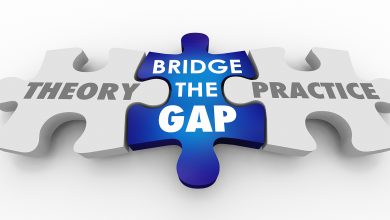How does Statistical Analysis work?

You will have a lot of numerical data after collecting quantitative data. It’s now time to have a look at some statistical analysis to make sense of these numbers and draw some conclusions.
A summary of some common techniques to summarise your data is provided here. Each technique is explained in what circumstances you would use it.
Statisticians make a positive impact on many aspects of our lives, ranging from daily life at home to making the world’s biggest cities function.
Analyzing statistical data involves identifying patterns and trends by collecting data and analyzing it and you can get Help With Math Assignment. It’s just another way of saying “statistics.” Once you collect data, you can analyze it to:
- You can use the mean (or the middle number in a set of data) to determine the location.
- Determine the spread of your data: they let you know whether the data is grouped tightly or is more spread out. For instance, the standard deviation is one of the most common spread measures; it tells you how to spread out the data is around the mean.
- Make predictions about future events based on past behavior. This is especially useful in retail, manufacturing, banking, or sports, or for any organization where trend analysis is necessary.
- Analyze the data from an experiment. The data you collect tells a story only when you analyze them. Hypothesis testing is the process of proving or disproving the null hypothesis (the most commonly accepted theory).
The steps of statistical analysis
The five discrete steps of statistical analysis are as follows:
- What type of data are you going to analyze?
- Examine the relationship between the underlying population and the data.
- Analyze the data in relation to the underlying population to construct a model.
- Run scenarios to help guide actions in the future using predictive analytics.
Analyzing statistical data has many benefits
In general, statistics can be used to identify trends that would not be apparent without these tools. To answer that question, it is best to focus on the benefits. With good statistics, you can decide based on facts, rather than gut feelings.
Statistics have proven themselves in a variety of cases. Twiddy & Company Realtors used statistics to cut its operating costs by 15%. They identified wasteful expenditures and eliminated them.
It’s also possible to analyze the market using data. The statistics reveal where the most sales occur, what value each sale carries, and what marketing accompanies each sale. This allows for improvements in all facets of sales and marketing.
There are plenty of credible sources claiming statistics is the hottest field for careers, from The New York Times to Google’s Chief Economist Hal Varien. But why do so many people talk about careers in statistical analysis and data science? Or perhaps it is the excitement of applying mathematical concepts to make a difference in the world. There may be a shortage of trained analytical thinkers or a need to manage big data.
Process of statistics analysis
In the process of statistics analysis, there are five major steps:
-
Collection of data
A great way to collect data for statistical analysis is through surveys, customer relationship management software, online quizzes, financial statements, and marketing automation software. You can make sure the data is viable by selecting data that is representative of the population. For example, a company might collect previously purchased customer data to gain an understanding of buyer behavior.
-
Information organization
After data collection companies must organize the data. This step is crucial because it enables them to confirm that the results of their analysis are valid.
-
Presentation of data
This is an extension of data cleaning because it involves arranging the data for easy analysis. Descriptive statistics tools are useful here to summarize the data. It is also possible to use data presentation to determine the best way to present the data depending on its arrangement.
-
Analyzing data
By using statistical methods, such as inferential analysis and associational analysis, analysts can identify patterns, trends, and relationships. By automating this process using computer software such as spreadsheets, you can ensure that human error is reduced in this statistics analysis process and that you can analyze data efficiently.
-
Interpretation of data
An analysis of the impact of a factory with 6,000 workers on crime rates within a small city with 13,000 residents can show a decrease in criminal activity rates. To illustrate this decline, you may use a line graph.
Final words:
You will have a lot of numerical data after collecting quantitative data. It’s now time to have a look at some statistics analysis to make sense of these numbers and draw some conclusions. A summary of some common techniques to summarise your data is provided here. Analyzing statistical data involves identifying patterns and trends by collecting data and analyzing it. It tells you how to spread out the data is around the mean. This is especially useful in retail, manufacturing, banking, or sports, or for any organization where trend analysis is necessary. Analyze the data from an experiment.
Pages 5
Words 900
Characters 5705
Characters excluding spaces 4731




